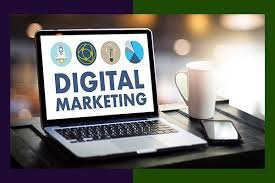Navigating the Realm of Remote Digital Marketing:
In today’s interconnected digital ecosystem, remote digital marketing has emerged as a powerful tool for businesses to connect with their target audiences regardless of geographical boundaries. This article delves into the intricacies of digital marketing, exploring its advantages, tools, strategies, challenges, and future trends.
Introduction:
Remote digital marketing involves leveraging digital channels and technologies to promote products or services while operating in a remote work environment. This paradigm shift in marketing practices has opened up new avenues for businesses to expand their reach and engage with audiences on a global scale.
Advantages of Remote Digital Marketing:
Cost-effectiveness:
Remote digital marketing offers a cost-effective alternative to traditional marketing methods. By eliminating the need for physical infrastructure and reducing overhead costs associated with brick-and-mortar establishments, businesses can allocate their resources more efficiently and achieve a higher return on investment.
Global Reach:
One of the key advantages of remote digital marketing is its ability to transcend geographical barriers. Through digital platforms and online advertising channels, businesses can reach audiences worldwide, tapping into new markets and demographics that were previously inaccessible.
Flexibility and Productivity:
Remote work environments provide marketers with the flexibility to manage their schedules and work from anywhere with an internet connection. This flexibility not only enhances productivity but also promotes a healthier work-life balance, resulting in higher job satisfaction and employee retention rates.
Tools and Technologies:
To succeed in marketing, businesses rely on a variety of tools and technologies to streamline their operations and maximize their impact. Content management systems (CMS), social media management platforms, analytics tools, and email marketing software are just a few examples of the digital tools that empower marketers to create, distribute, and measure the effectiveness of their campaigns.

Strategies for Success:
Search Engine Optimization (SEO):
SEO is a fundamental aspect of remote digital marketing, ensuring that businesses’ websites rank prominently in search engine results pages (SERPs). By optimizing website content and implementing SEO best practices, businesses can increase their visibility online and attract organic traffic from potential customers actively searching for their products or services.
Content Marketing:
Content marketing revolves around the creation and dissemination of valuable, relevant content to engage and educate audiences. Through blog posts, articles, videos, and other forms of content, businesses can establish themselves as industry leaders, build trust with their target audience, and drive conversions over time.
Social Media Engagement:
Social media platforms serve as valuable channels for businesses to connect with their audience, build brand awareness, and foster meaningful relationships. By sharing compelling content, engaging with followers, and leveraging targeted advertising options, businesses can amplify their message and expand their reach on social media.
Challenges and Solutions:
Despite its many benefits, digital marketing presents its own set of challenges, including communication barriers, time zone differences, and cybersecurity concerns. However, by investing in clear communication protocols, scheduling tools, and robust cybersecurity measures, businesses can mitigate these challenges and ensure the success of their remote marketing initiatives.
Future Trends:
Looking ahead, the future of remote marketing is ripe with innovation and opportunity. Artificial intelligence (AI), machine learning, and automation are poised to revolutionize marketing practices, enabling businesses to personalize their messaging, streamline processes, and deliver more impactful campaigns to their target audience.
Conclusion:
In conclusion, remote digital marketing has transformed the way businesses connect with their audience in an increasingly digital world. By embracing the advantages of remote work and leveraging the latest tools and technologies, businesses can position themselves for success and thrive in the ever-evolving landscape of digital marketing.
FAQs:
1. What are the primary benefits of remote digital marketing?
Remote digital marketing offers several advantages, including enhanced cost-effectiveness, broader access to global audiences, and greater flexibility for marketing professionals. By leveraging digital platforms, businesses can extend their reach without the traditional constraints of physical location. Moreover, remote work arrangements empower marketers to manage their time more efficiently, boosting productivity and job satisfaction.
2. How can businesses mitigate communication barriers in remote digital marketing?
To address communication hurdles in remote marketing, businesses should prioritize establishing clear and transparent communication channels. Utilizing a mix of video conferencing, instant messaging, and project management tools fosters effective collaboration among remote teams. Regular team check-ins and meetings ensure alignment with marketing objectives and facilitate seamless information exchange.
3. What role does content marketing play in remote digital marketing?
Content marketing serves as a cornerstone in digital marketing strategies by enabling businesses to create and disseminate valuable, relevant content to their target audience. Through diverse formats such as blog posts, videos, and infographics, content marketing establishes brand authority and fosters trust among potential customers. Engaging content not only attracts and retains audience attention but also drives conversions and sales.
4. Which tools and technologies are commonly utilized in remote digital marketing?
Several tools and technologies are prevalent in remote digital marketing, including:
- Content management systems like WordPress and Joomla for efficient website content management.
- Social media management platforms such as Sprout Social and Later for scheduling posts and analyzing performance metrics.
- Analytics and tracking solutions like Google Analytics and Mixpanel for comprehensive website traffic analysis and user behavior insights.
- Email marketing software such as Mailchimp and Campaign Monitor for executing email campaigns and managing subscriber lists.
- Collaboration tools like Slack and Trello for seamless communication and project coordination among remote teams.
5. How can businesses stay abreast of the latest trends in remote digital marketing?
Remaining updated with the latest trends in marketing requires continuous engagement in industry research, participation in webinars and conferences, and regular monitoring of reputable marketing resources and publications. Networking with peers and actively engaging in online communities provide valuable opportunities for knowledge exchange and learning from others’ experiences.







